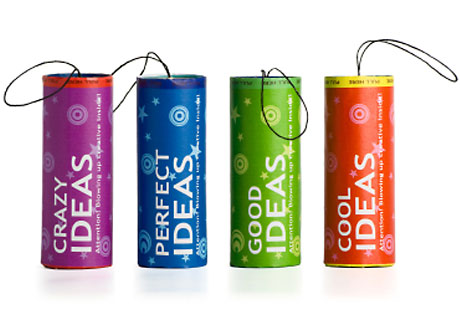Strategy is about resource allocation. So is innovation, and portfolio management (PM) is one proper practice of investing resource according to your innovation strategy.
Robert G. Cooper is a master in portfolio management. He has defined 10 best practices and 4 guidelines for portfolio management for new products:
- Best practices are: 1) load the front-end of the project; 2) install an idea-to-launch process or “stage gate” system; 3) adopt an incremental commitment approach (before full investment); 4) know when to walk away (learn to kill projects); 5) categorize your developments projects into buckets and adapt (one size doesn’t fit all); 6) triangulate (combine multiple selection methods) to pick projects 7) try scorecards as a Go/Kill decision tool; 8)use success criteria (such as profitability and sales) too; 9) use the right financial approach (Expected Commercial Value method might be more appropriate than Net Present Value); 10) build in periodic portfolio reviews to rank your projects and prioritize resources.
- Guidelines or goals of PM are: 1) maximizing the value of your portfolio using assessment tools (NPV, ECV, Scorecard); 2) seek balance in your portfolio using Bubble diagrams and Pie charts techniques; 3) align your portfolio with strategy, splitting resources into strategic buckets (which means you have to define a product innovation strategy); 4) pick the right number of projects.
Another look at Portfolio Management using Rapid innovation glasses brings me to the following assertions to make your innovation portfolio highly valuable:
- It’s balanced
Cooper categorizes projects in New products, Platforms and technology developments, Improvements, and Customerv requests. In rapid innovation approach, trying to keep innovation simple, we’ve seen that we are crossing new products, with leadership platform, and customers needs and acceptance. Therefore we suggest to rather balance the portfolio between:
- disruptive and radical projects (see “four quadrants of innovation” ranking) drawing on a “silver bullet” approach, with high reward and high risk, and which may require time for development and engagement;
- quick wins projects which will demonstrate rapid innovation capabilities;
- exploration prototypes which are to illustrate future trends, materialize ideas, and demonstrate concepts which will further feed the innovation pipe; working in the way design probes or concept car work, they are at low investment cost.
Rosabeth Moss Kanter in “Innovation: the classic traps (Nov 2006)“ show a rather similar approach with an innovation pyramid: “a few big bets at the top, representing clear directions and receiving lion’s share of investment, promising midrange ideas, and a broad base of early stage ideas or incremental innovations permitting continuous improvement”.
- It’s inspired
To measure your innovation portfolio success, you have to define your goals (define a dedicated performance yardstick: initially prefer product delivery encompassing innovative leadership platform to short-term financial results), and therefore your innovation intent (define your belief & challenges you want to face, formulate and share the innovation strategy and culture principles, create context). It is all the more important that a fuzzy innovation strategy will prevent you from balancing portfolio consistently, and staffing resources according to priorities. Scorecard and metrics are precious to maximize your value portfolio: so are belief, metaphor, or mantra which explain why you start moving, and will support you persistently along the innovation provess.
- It’s staffed
Staff projects appropriately to complete them faster. Be mindful of some scarce resources that might be shared across projects: reduce number of projects rather than atomizing your resources. Once a new market opportunity bubbles up, “resource” quickly to complete pre-development assessment: clock starts ticking from day one. Develop a reserve: unplanned new product ideas will arise unexpectedly, leave some unused capacity for the really new projects.
- It’s dynamic
Portfolio is constantly monitored along the development process of the various products through what Cooper calls the stage and gate system. Some projects make progress, and get more financial commitment. Other projects turn out to be bad ideas, and deserve to be killed: use your “license to kill” rather than defocus your portfolio. To anticipate projects leaving the portfolio, you need to feed the pipe: maintain a storehouse of developing technologies, leverage on open innovation to feed your pipeline, initiate an invention track separately from product development track to grab new innovation ideas. Make the funnel more like a pipe: “make tough choices early”.
- It’s transparent
Everyone must understand the rules of the game and position their individual decisions in the context of the innovation plan. Periodic portfolio reviews are necessary to rank your projects and prioritize resources: they must absolutely fight arbitrary, and apply homogeneous scorecards and assessment tools across all projects: no project can be prince’s fiat, innovation is a collective adventure.
- It’s scalable
“Start by managing a smaller portfolio of projects and achieve appropriate matching of workload and capacity, leading to greater commitment, reduced idle time and development queues, and increased innovation cycles” is the smart advice of D Reinertsen and P Smith. Streamline portfolio management and product development process so as to synchronize marketplace rythm and innovation capabilities. Then scale up.
APQC (American Productivity & Quality Center) studies completed in 2003 show the impact of PM, and reversely that companies lacking of PM practices, such as ranking and prioritizing projects, balance in project types, balance between number of projects & resources, project selection process, are notably underperforming.

Thereby there is no better way to conclude than implementing Robert’s claim: “Any portfolio method outlined is better than non at all. So just do it!”





15 Comments